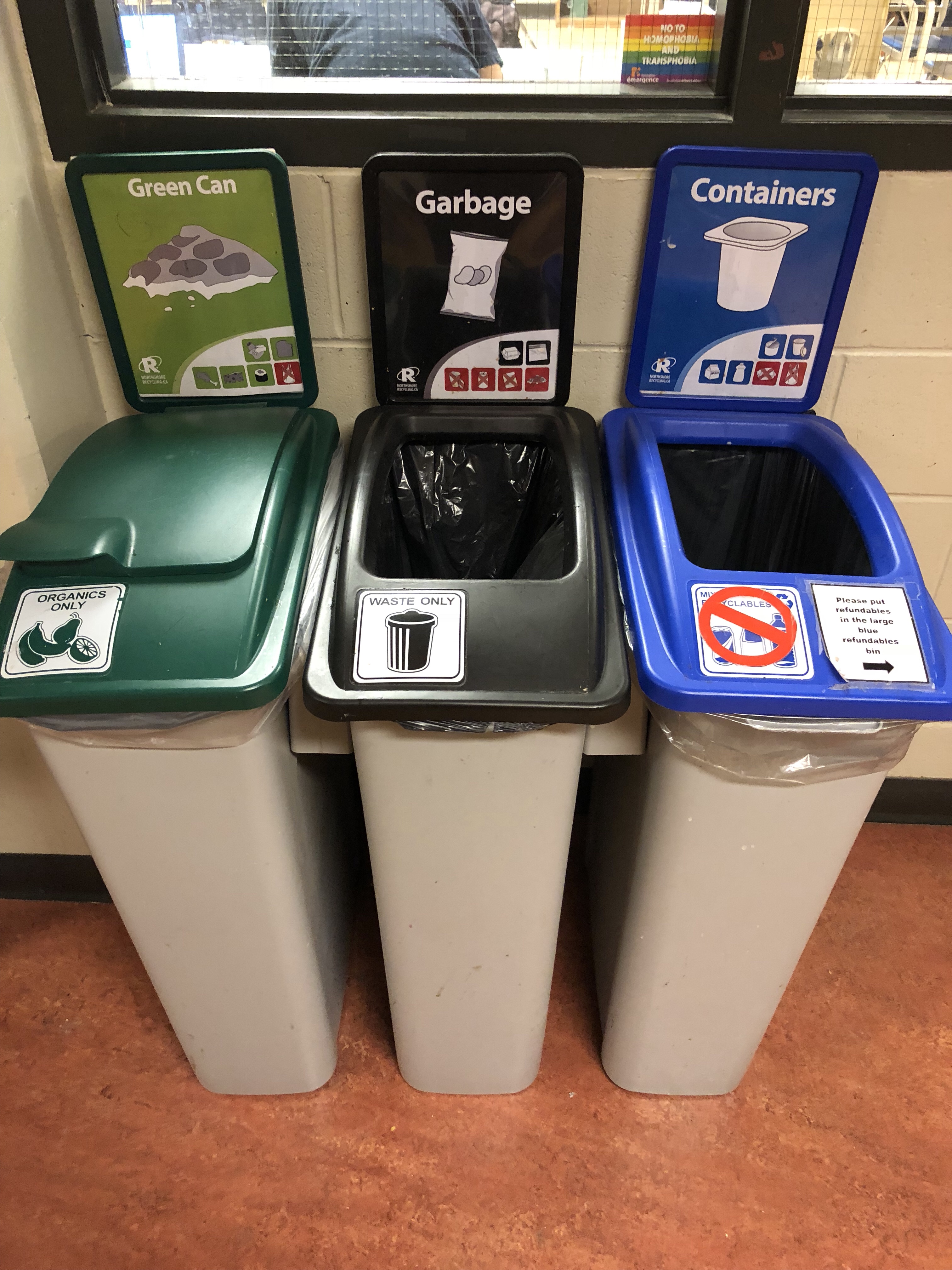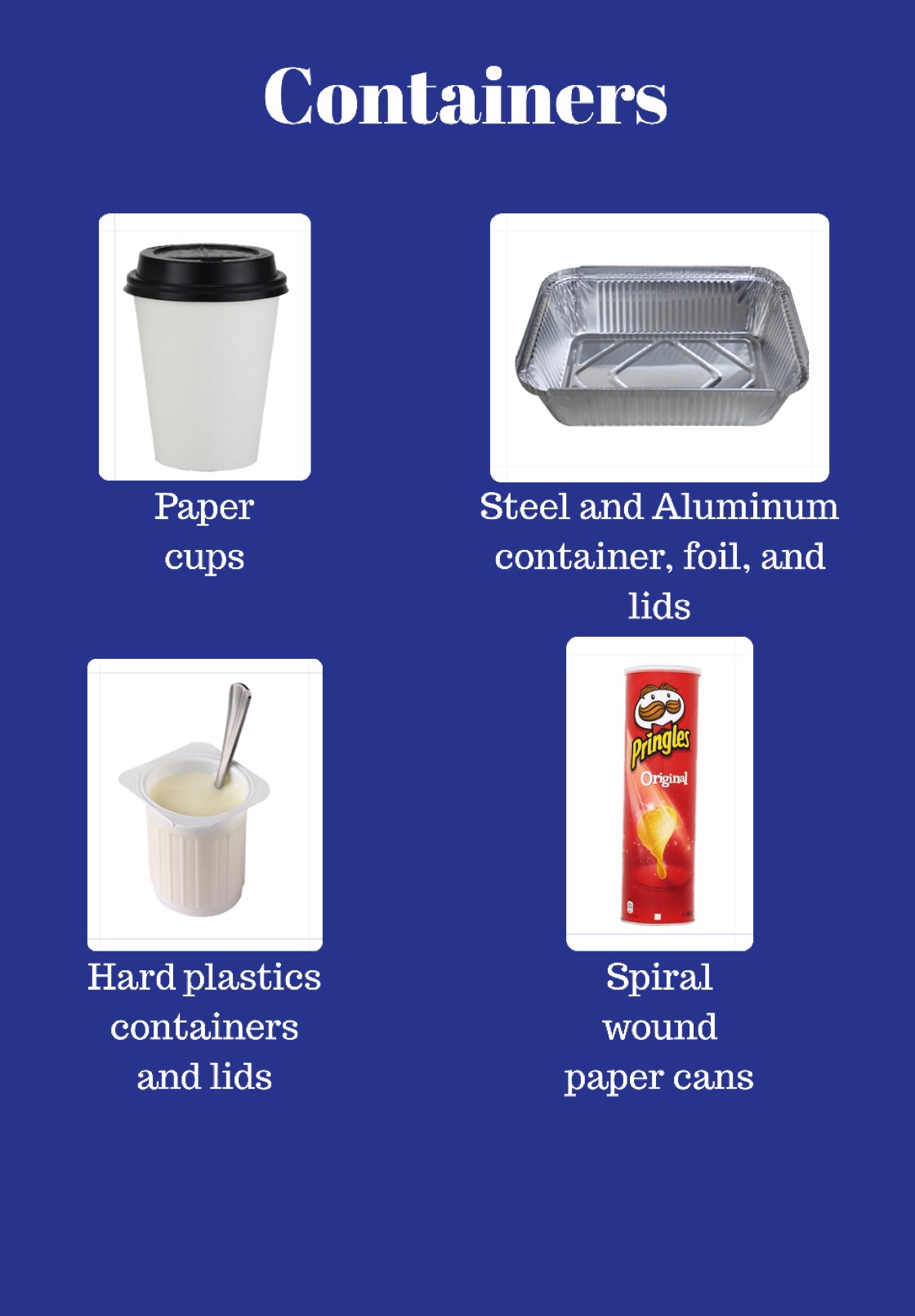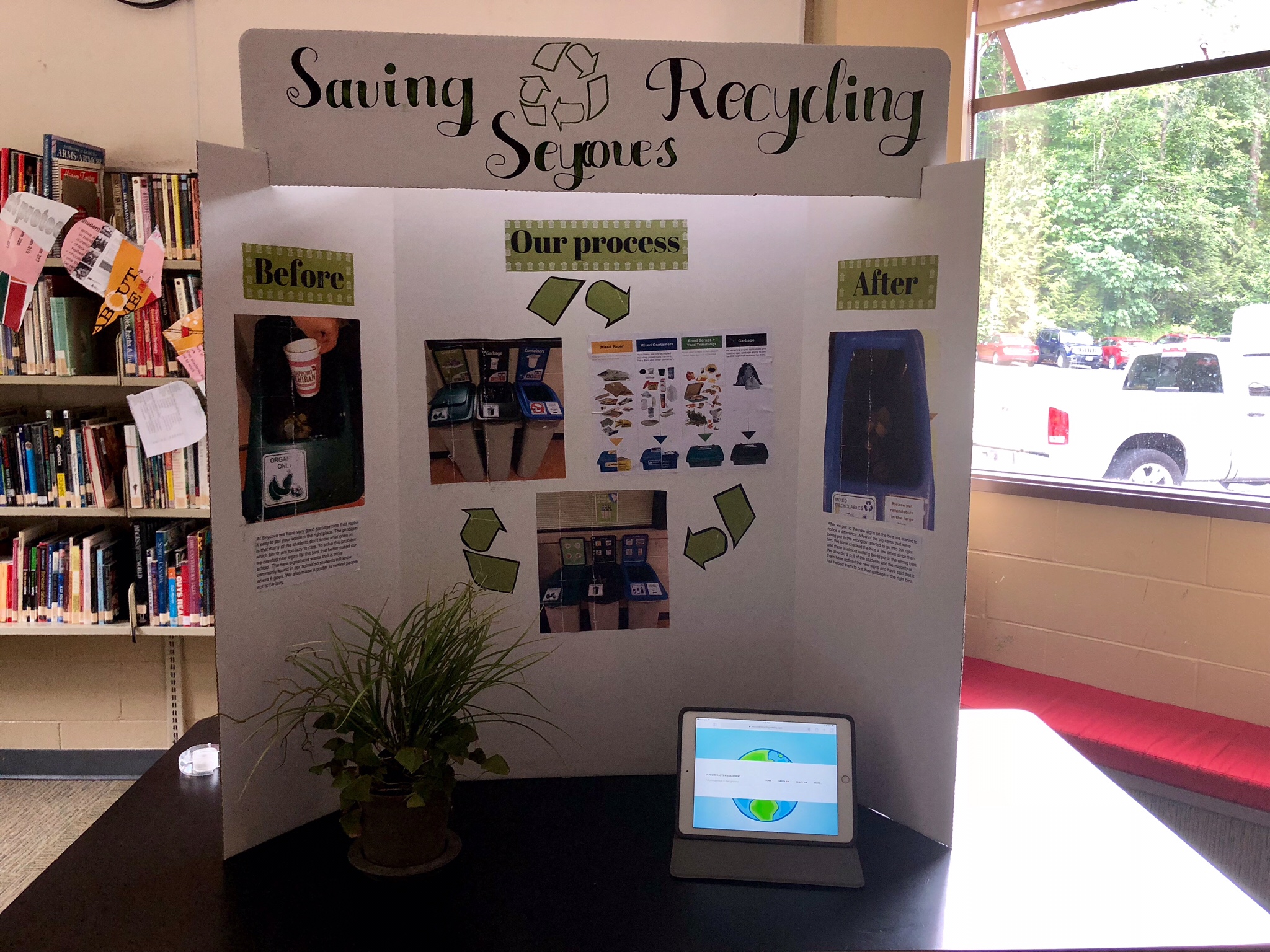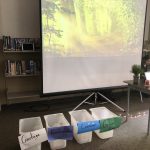Posted on June 21, 2018
Blue Sky 2018

We have just finished another wonderful Blue Sky exhibition. If you didn’t already know, Blue Sky is a project we do in PLP where you have to find a problem and try and solve it. If the problem has already been solved then you have to find a way to improve the solution. If you would like to read more about it then you can read some of my past posts Here. This year Blue Sky was a little different. For our first exhibition in grade 8 we had complete freedom of what we wanted to do. To make things easier for us our teachers have slowly been constraining the projects and this year they were very constraint.
For this years Blue Sky we had to choose from one of the UN’s 17 sustainable development goals and find a project within it. We were put into groups of four and we had to decide on a topic. I was in a group with Sofia, Hannah, and Izzy and we chose responsible consumption and production. Our topic is about resource and energy efficiency, sustainable infrastructure, and providing access to basic services, green and decent jobs and a better quality of life for all. We chose the topic because we all wanted to do a project that helped our environment. Something different about this years Blue Sky was that we were aloud to work in pairs. We were struggling to each come up with an idea. We started Blue Sky less than a month before the exhibition so Hannah and I decided to partner up to make our project better.
Our main criteria this year was to do a project that we could implement. This made coming up with an idea even harder. We came up with a good idea for reducing waste in fast food restaurants but it was impossible to implement. We knew we had to make our idea more simple so we decided to focus on something in the school. Every year in blue sky we follow a cycle to help us make the best project possible. It is called the launch cycle and it has 7 steps to making the perfect product. This helped us come up with an idea that we could implement in our school.
The first phase of the cycle is Look, Listen, and Learn. In this phase you have to spark your curiosity. You look around, listen to people, and learn about different problems around you. Hannah and I started off by walking around the school. We went to the cafeteria and realized that they weren’t being as environmentally conscious as possible but they were still really good. We looked at the waste bins in our school and we realized that they had a few big problems. This sparked our curiosity which led us to the next phase of the launch cycle.
The second phase of the cycle is Ask Tons Of Questions. In this phase you have to come up with a lot of questions to help you understand the problem. These questions are important because they will allow you to come up with the best solution to the problem as possible. Some examples of questions we had are “what is the biggest problem with our schools recycling program?” And “why are there problems with the recycling?” We had a ton of questions we needed to answer to solve our problem. To answer these questions we had to go onto the third phase of the launch cycle.
The third phase of the launch cycle is Understand The Problem. This is the research phase. You now have to answer all of the questions you had before and probably more as you go along. You can do this with interviews, articles, data, videos, and more. This phase is very important because if you don’t understand your problem then you won’t be able to completely solve it. For our research Hannah and I went through the recycling bins. We realized that there was more garbage in the wrong bins than in the right bins. This is a huge problem because this means that everything would end up in the trash instead of the compost or recycling unless our janitors went through it every night. Hannah and I collected data from lots of the bins in our school and we did some more research about these types of issues online and we found that this is a very common problem. We then had to take all of this research and apply it to the next phase of the cycle.
The fourth phase of the launch cycle is to Navigate Ideas. This is the phase where you finally have to come up with a solution to your problem. Hannah and I started off with a brainstorm. We came up with tons of ideas of solutions to the problem. We then went through our ideas and weeded out the bad ones. We had a few good ideas and we wanted to try and combine them. Our first idea was to set up a volunteer program where students would watch the bins at break and lunch to make sure everything went in the right bin. We set up a meeting with our principal to see if this was a good idea. We realized this was unrealistic because no one would volunteer and it was too late in the year to implement it. Our principal liked our other idea a lot more. Our other idea was to change the signs on the bins to make it more clear what goes in each bin. This was a better idea that we could implement. After we had a solid plan for our idea we were able to move onto the next phase.
The fifth phase is to Create a Prototype. This is my favourite phase because we finally get make something and solve the problem. For this phase we got to make the new signs for the bins. We wanted to personalize them for our school so the students would know where the most commonly used grab age goes. We made the posters with pictures of things from our school such as bowls from our cafeteria and garbage from our vending machines. The other part of our project was to create a website. We wanted to make a website where students could go if they weren’t sure which bin to throw their stuff into. The website had extensive lists of what can and can’t go into each bin. In PLP nothing is ever perfect on the first try so we had to go into the next phase of the cycle.
The sixth phase of the launch cycle is to Highlight and Fix. Here we had to get some feedback on our first prototype and then fix and critiques we got. We asked a few friends about our first posters and they said that they looked a little plain. We then asked about our website and they said to add a page about why we did this project and what exactly we did. We got a little bit more critique and they we made our second draft. Normally we are supposed to have three prototypes but we were very short on time this year so we were only able to do two. We wanted to see if our project had worked so we went around to the bins again and saw that the signs have helped. There was significantly less garbage in the wrong bins and this made me really happy. We also did a poll of the students and the majority of them said they noticed the signs and they helped them know where everything goes. Finally after lots of hard work we were ready for the final phase of the launch cycle.
Seycove Waste Management Website
The last phase of the cycle is to Launch to the World. In this phase you show your project to the world in any way you choose. In PLP we have the exhibition where we set up our work and show it to everyone. I’d say that roughly about 300 people came to see the projects. Hannah and I had our project set up and every time someone came by we had to explain our project to them. This is the best way to showcase our projects because we get to show them to people in our community. Many of our projects were based around our community so it’s good to let everyone here see them.
For the exhibition we don’t just set our projects up and show people them. We are each put into groups and have to decorate a room based on the group we are in. This year the group’s were based on the 17 goals for sustainable development. For my groups goal we wanted to design our room to look like a community that is very responsible with their consumption and production. For the exhibition we also got some grade 9’s and 8’s put into our groups. The grade 9’s and 8’s in my group were Lucas, Emily, Melika, Jamie, Alivia, and Jackson. We also had to pick out a food or drink to serve and a game that all went along with our theme. This took a lot of planning, preparation, and time to set up but it turned out amazing.
Blue Sky: Responsible Consumption and Production Planning
For decorations we set up plants all over the room. We used as much natural light as possible to save electricity. We had a picture of a forest projected on the screen and we had very calming music playing. We also made a few signs out of paper from the recycling bin to reduce the amount of waste we had. For our food we made cookies out of all organic ingredients and used as little packaging as possible. For a drink we had a lemon and cucumber water that we served in reusable mason jars. We also had paper straws for the water. Our game was that the person playing was given some garbage and they had to throw it in the right bin in as little time as possible and if they beat the record they got a gummy worm because bugs are a good part of a sustainable diet. We had lots of fun setting it up and I was so proud with how it turned out.
Hannah and my presentation went really well. I am normally extremely nervous for exhibitions because talking to people kinda scares me but I was really happy with my project so I wasn’t nervous at all. We made a poster board that showed the before and after of the waste bins and also what we did to change them. We had both of our iPads out on display. On Hannah’s iPad was the poll results and my iPad had the website on it. Everyone seemed to really like our project. Tons of people told us their stories of bad waste management. I ended up loving telling people about our project because they were all very happy that someone was doing something about this problem.
This years Blue Sky was a little more challenging than any other but I feel like it went well. I had lots of fun working with Hannah on this project even though it meant I had to go digging through the trash. I had a really good group for the exhibition and we all worked really well together to set the room up. Everything went even better than I expected and I loved Blue Sky this year. I’m not sure what we are doing next year but whatever it is I am excited for it.






